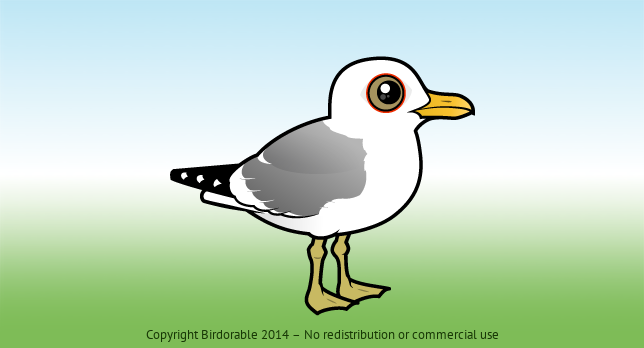Common Gull
About the Common Gull

The Common Gull is a small species of migratory "white-headed" larus gull that is found across large parts of Europe and Asia.
Common Gulls nest on the ground or in trees (nesting in trees is fairly unusual in gulls). They breed in colonial groups, usually near water. Common Gulls take three years to reach full maturity.
Common Gulls are omnivorous and opportunistic feeders. They have a wide variety in diet, taking prey like worms, small fish, and insects. They also dine on grain and other vegetation, and will scavenge from discarded rubbish.

Find cute products & gifts with our Birdorable Common Gull
Details & Statistics
Added to Birdorable
Hatched December 19, 2014
Scientific Name
Larus canus
Bird Family
Measurements
Length:
16.1 to 18.1 inches
(40.9 to 46 cm)
Wingspan:
3.5 to 3.7 feet
(1.1 to 1.1 meters)
Weight:
12.7 to 21.2 ounces
(360 to 601 grams)
Range
International Names

Chinese
海鸥

Czech
racek bouřní

Danish
Stormmåge

Dutch
Stormmeeuw

Finnish
kalalokki

French
Goéland cendré

German
Sturmmöwe

Italian
Gavina eurasiatica

Japanese
カモメ [kamome]

Korean
갈매기

Norwegian
Fiskemåke

Polish
mewa pospolita

Russian
Сизая чайка

Spanish
Gaviota cana

Swedish
Fiskmås
















